Introduction
The foundation of all contemporary infrastructure, from massive skyscrapers to long bridges and sturdy highways, is concrete. Its strength, adaptability, and durability are the reasons for its extensive use. To guarantee the longevity and safety of concrete structures, however, extensive testing is required due to the inherent variability in raw materials and environmental conditions. A specialized concrete testing equipment manufacturer is essential in this situation.
One of the top manufacturers of concrete testing equipment, Engineering Solution Equipment, provides a wide variety of cutting-edge instruments made to evaluate the performance and quality of concrete at different phases of building. Their dedication to accuracy and creativity highlights how crucial dependable testing tools are to protecting infrastructure.
The Importance of Concrete Testing
One of the most popular building materials in the world, concrete serves as the base for industrial structures, bridges, highways, buildings, and dams. Concrete is not a uniform material, despite its strength and versatility; it is extremely sensitive to changes in raw materials, mixing techniques, and environmental factors. Therefore, proper testing is necessary to guarantee cost-effectiveness, durability, and safety.
Ensuring Structural Integrity
The stability and safety of a structure are directly impacted by the performance of concrete. Concrete can be severely weakened by elements like poor curing, low-quality aggregates, and inaccurate water-to-cement ratios, which can result in cracks, deflection, or even structural failure.
Engineers can evaluate the following through methodical testing with tools like the slump test apparatus and compression testing machines:
- Strength Development: Concrete can support the intended load if its design compressive strength is confirmed.
- Workability: The risk of voids or honeycombing is decreased when fresh concrete can be placed and compacted correctly.
- Durability: Concrete’s response to environmental stress is predicted by tests for air content, water absorption, and chloride penetration.
By identifying any deviation early on, corrective action can be taken before the concrete is poured, avoiding expensive repairs and preserving the integrity of the structure.
Compliance with Standards and Regulations
National and international standards, including ASTM, IS, EN, and ISO guidelines, must be followed during construction projects. Legal repercussions, project delays, and safety risks can arise from noncompliance.
Concrete testing equipment ensures that:
- Mix designs meet regulatory specifications.
- Construction teams maintain quality throughout the project lifecycle.
- Certification and inspection requirements are fulfilled efficiently.
Testing ensures compliance, which not only increases safety but also boosts construction companies’ reputations and fosters stakeholder trust.
Optimizing Material Usage and Cost Efficiency
Testing is not just about safety—it also contributes to economic and environmental efficiency. Precise measurements of concrete properties allow engineers to:
Testing promotes economic and environmental efficiency in addition to safety. Engineers can do the following with accurate measurements of concrete properties:
- Modify the ratios of cement, aggregate, and water to optimize mix designs.
- Cut down on material waste while still getting the performance you want.
- Reduce the negative effects on the environment by using less cement, which is a significant source of CO2 emissions.
Concrete testing guarantees that projects are both safe and financially viable by striking a balance between quality and cost.
Enhancing Long-Term Performance
It is anticipated that concrete structures will withstand a variety of loads and environmental conditions for decades. Throughout construction and after placement, ongoing testing can:
- Recognize deterioration early.
- Determine any structural flaws before they endanger public safety.
- Increase the structure’s lifespan by enabling predictive maintenance techniques.
Putting money into thorough testing of fresh, hardened, and in-service concrete guarantees that infrastructure will continue to be dependable, safe, and long-lasting for the duration of its anticipated life.
Types of Concrete Tests and Their Significance
Fresh Concrete Tests
These tests assess the workability and consistency of freshly mixed concrete, ensuring it can be properly placed and compacted. Key tests include:
- The Slump Test evaluates the consistency and workability of newly mixed concrete.
- Concrete mix compaction efficiency is ascertained using the Compaction Factor Test.
- Concrete’s air void content, which influences durability, is evaluated by the Air Content Test.
Hardened Concrete Tests
After concrete has set and hardened, these tests assess its strength and longevity. Important tests include:
- The concrete’s resistance to axial loads is assessed using the Compressive Strength Test.
- The concrete’s resistance to bending forces is evaluated using the flexural strength test.
- The concrete’s ability to withstand tension is assessed using the Tensile Strength Test.
- Durability tests include water absorption and chloride ion penetration, which measure how long concrete will last in different environmental settings.
Non-Destructive Testing (NDT)
NDT methods allow for the evaluation of concrete structures without causing damage. Common NDT techniques are:
- The Ultrasonic Pulse Velocity Test evaluates the quality and homogeneity of concrete by measuring the speed at which ultrasonic waves pass through it.
- The rebound hammer test measures compressive strength indirectly and estimates surface hardness.
- By detecting temperature changes on the surface, infrared thermography can spot possible voids or delaminations.
- Images of the internal structure are provided by ground penetrating radar (GPR), which can detect irregularities like voids or cracks.
Engineering Solution Equipment: Pioneering Concrete Testing
Setting standards for quality, dependability, and innovation in the building sector, Engineering Solution Equipment has made a name for itself as a top manufacturer of concrete testing equipment. Their dedication to cutting-edge technology and precision engineering guarantees that engineers and construction experts can precisely evaluate the quality of concrete at every project stage.
Comprehensive Product Portfolio
Engineering Solution Equipment offers a wide array of testing solutions designed to cover all aspects of concrete evaluation:
Compression Testing Machines:
These devices are designed to accurately measure the compressive strength of concrete samples. Before placing structures, engineers can confirm that concrete satisfies design specifications thanks to its ability to support a variety of capacities and its suitability for both laboratory and on-site testing.
Slump Test Apparatus:
The consistency and workability of fresh concrete are guaranteed by the slump test apparatus. It aids in mix design optimization by offering accurate measurements, guaranteeing compaction and placement on-site.
Air Content Meters:
Proper air entrainment in concrete is closely related to durability, particularly in areas that are susceptible to freeze-thaw cycles. The precise measurement of air void content provided by Engineering Solution Equipment‘s air content meters helps to avoid premature deterioration and cracking.
Non-Destructive Testing (NDT) Tools:
Engineers can evaluate the internal quality of hardened concrete without causing damage thanks to their selection of nondestructive testing (NDT) tools, which include rebound hammers, infrared thermography devices, and ultrasonic pulse velocity testers. These resources are crucial for conducting continuous quality assurance and assessing current structures.
Innovation and Technology
Modern technology is constantly incorporated into Engineering Solution Equipment‘s products. For instance:
- Real-time data collection and analysis are made possible by smart sensors and digital interfaces.
- Automated compression testing systems boost productivity and decrease human error.
- Compliance with international standards like ASTM, IS, and EN is ensured by advanced calibration.
Their emphasis on innovation guarantees that their equipment not only satisfies present testing standards but also foresees future requirements, enabling intricate and extensive infrastructure projects.
Training and Support
In addition to manufacturing, Engineering Solution Equipment offers customers comprehensive technical support and training. This guarantees that engineers, technicians, and quality control staff have everything they need to operate the equipment efficiently. The company’s assistance improves the accuracy and dependability of concrete testing, from sample preparation to test result interpretation.
Commitment to Safety and Quality
Engineering Solution Equipment is essential to improving infrastructure safety because it offers dependable, accurate, and user-friendly equipment. Their goods enable construction crews to:
- Detecting material inconsistencies early.
- Optimize concrete mix designs for strength and durability.
- Maintain compliance with local and international quality standards.
- Reduce long-term maintenance and repair costs through precise quality control.
Reputation in the Industry
With years of expertise and a solid reputation in the building industry, Engineering Solution Equipment has established itself as a leader in concrete testing quality. They are a preferred partner for both small and large-scale infrastructure projects because of their creative solutions, which are trusted in projects ranging from high-rise buildings and industrial facilities to bridges and highways.
Case Studies Highlighting the Importance of Concrete Testing
Concrete testing affects the safety, longevity, and cost-effectiveness of infrastructure projects in the real world; it is not merely a theoretical requirement. The case studies that follow demonstrate how appropriate testing can guarantee the long-term dependability of concrete structures, guide corrective actions, and prevent failures.
Case Study 1: Bridge Construction – Preventing Structural Failures
Several concrete batches failed to meet the necessary design strength in a major bridge construction project that spanned more than one kilometer, according to routine compressive strength tests. Inconsistencies in raw material quality and inappropriate mixing during specific shifts were identified as the cause of the disparity.
The construction crew was able to identify this problem early on using common testing tools like slump and compression testers, which allowed them to:
- Reject non-conforming concrete batches before they are poured.
- Adjust mix designs and enforce stricter quality control measures.
- Prevent potential structural weaknesses that could have led to cracks or even partial collapse over time.
The bridge was finished on time, and post-construction inspections verified that it complied with all durability and safety requirements. This instance demonstrates the vital role that manufacturers of concrete testing equipment, such as Engineering Solution Equipment, play in facilitating the prompt identification and resolution of quality problems.
Case Study 2: High-Rise Building – Detecting Internal Defects
Non-destructive testing (NDT) techniques were used to assess the integrity of concrete slabs and columns during the construction of a 35-story high-rise building. Engineers found internal voids and uneven compaction in a number of important columns using rebound hammers and ultrasonic pulse velocity testers.
Immediate corrective measures included:
- Targeted reinforcement and grouting to fill voids.
- Adjustments in vibration and compaction techniques for subsequent pours.
- Re-testing to ensure that all structural elements achieved the required performance levels.
The building might have suffered from uneven settlement, decreased load-bearing capacity, or early structural fatigue if these flaws had gone unnoticed. The case illustrates how well-suited contemporary concrete testing apparatuses are for protecting tall buildings.
Case Study 3: Highway Pavement – Ensuring Longevity
Large amounts of concrete with stringent durability requirements were needed for a national highway project because of the high traffic volumes and challenging environmental conditions. Equipment for concrete testing was utilized to:
- Perform workability tests (slump and compaction factor tests) for proper placement.
- Conduct compressive and flexural strength tests on hardened concrete.
- Measure air content to prevent freeze-thaw damage in colder sections of the route.
Engineers found small variations in air content through thorough testing at several stages and modified the mix design accordingly. Long-term maintenance costs were decreased by this proactive approach, which guaranteed the pavement would endure severe weather and heavy loads for decades.
Case Study 4: Dam Construction – Mitigating Environmental Risks
Concrete was put through rigorous durability testing, including tests for water permeability and chloride ion penetration, as part of a large-scale dam project. Making sure the structure could endure hydrostatic pressure and chemical exposure from water over time was the aim.
Some concrete batches had minor porosity problems, according to the tests. Among the corrective measures were:
- Modifying mix ratios to reduce permeability.
- Implementing extended curing processes to enhance strength.
- Continuous monitoring with embedded sensors for early-age performance assessment.
This example shows how thorough concrete testing safeguards the environment and infrastructure, guaranteeing that dams and other structures like them stay secure and functional for many years.
Future Trends in Concrete Testing
Technological developments, environmental concerns, and the growing complexity of contemporary infrastructure are all driving rapid changes in the field of concrete testing. Engineers and construction experts can preserve safety, quality, and efficiency by staying ahead of these trends.
Automation and Smart Technologies
Concrete testing is being revolutionized by automation, which speeds up the procedure and lowers human error. Repeated tests like sample preparation, compressive strength measurement, and slump tests can now be carried out with high precision by robotic systems. In order to provide real-time insights into curing and performance, smart sensors embedded in concrete can continuously monitor variables like temperature, moisture content, and early-age strength.
Large volumes of data gathered from construction sites are being analyzed by testing equipment that incorporates artificial intelligence (AI) and machine learning algorithms. By using these tools, engineers can proactively implement corrective measures by anticipating possible weaknesses or failure points before they materialize. In addition to increasing accuracy, this automation and AI combination optimizes resources and lowers labor costs.
Sustainability and Environmental Focus
In the building sector, sustainability is increasingly becoming a top priority. Carbon emissions from concrete are significant, and testing tools are being developed to encourage environmentally friendly building methods. Concrete mixes containing recycled aggregates, alternative cementitious materials, and other sustainable ingredients can now be evaluated thanks to sophisticated testing equipment.
Engineers can create structures that last longer and require less maintenance by using durability tests like water absorption and chloride penetration, which further lessen their impact on the environment. Businesses can support green construction initiatives and corporate social responsibility objectives while meeting regulatory requirements by implementing sustainability-focused testing.
Non-Destructive and Remote Testing
Since non-destructive testing (NDT) techniques evaluate the quality of concrete without causing damage, they are becoming more and more popular. For accurate defect detection, future trends will involve combining AI with more sophisticated NDT technologies, like 3D imaging, infrared thermography, and Ground Penetrating Radar (GPR).
Systems for remote monitoring are also becoming more popular. Engineers can monitor the condition of concrete structures in real time from any location by using Internet of Things (IoT) devices, which eliminates the need for regular on-site inspections. Large-scale infrastructure projects with difficult access, like bridges, dams, and tunnels, benefit greatly from this technology.
Data Analytics and Predictive Maintenance
It is possible to identify trends, anticipate possible failures, and schedule preventive maintenance by analyzing the massive volumes of data produced by contemporary testing apparatus. Engineers can foresee problems like corrosion, cracking, or material deterioration before they become serious by using predictive analytics. This proactive approach increases public safety, prolongs the life of structures, and lowers repair costs.
Integration with Building Information Modeling (BIM)
Concrete testing is being incorporated into these digital platforms more and more as BIM transforms construction management. Engineers can make well-informed decisions during the design, construction, and maintenance phases by directly feeding test results, material specifications, and structural performance data into BIM models. Consistency, traceability, and a more comprehensive approach to infrastructure management are guaranteed by this integration.
Conclusion
The foundation of infrastructure safety, concrete testing equipment is much more than just a legal requirement. Bridges, highways, and skyscrapers are examples of modern construction projects that require materials that not only satisfy design requirements but also withstand environmental stress and the test of time. Construction risks are increased in the absence of thorough testing at every stage, from freshly mixed concrete to hardened structures, which could result in structural failures, monetary losses, or even dangers to public safety.
Every batch of concrete will meet strict quality and performance standards if you invest in top-notch testing equipment from a reputable Concrete Testing Equipment Manufacturer like Engineering Solution Equipment. Engineers rely on precise, real-time data from tools like air content meters, slump test apparatus, compression testing machines, and non-destructive testing devices to make important decisions. In the end, these tests improve the resilience and durability of infrastructure projects by assisting in the early detection of anomalies and directing remedial actions.
Furthermore, by maximizing material use, cutting waste, and encouraging ecologically conscious design, advanced testing techniques support sustainable building. Concrete testing equipment plays an even more important role in a world that is becoming more and more concerned with longevity and green infrastructure.
In the future, concrete testing will be transformed by advancements like automation, artificial intelligence, and smart sensors. Faster, more accurate measurements, less human error, and predictive insights into structural performance are all made possible by these technologies. Construction companies can proactively protect infrastructure while increasing productivity and adhering to international standards by adopting these innovations.
In summary, incorporating trustworthy testing tools into construction processes is a strategic investment in structural integrity, public safety, and sustainable development rather than just a technical one. In terms of offering thorough testing solutions that enable engineers, contractors, and project managers to construct more robust, secure, and resilient infrastructure, Engineering Solution Equipment is a model of excellence. Setting quality testing as a top priority now will guarantee that our roads, bridges, and buildings are safe for future generations, enhancing the confidence society has in contemporary engineering methods.
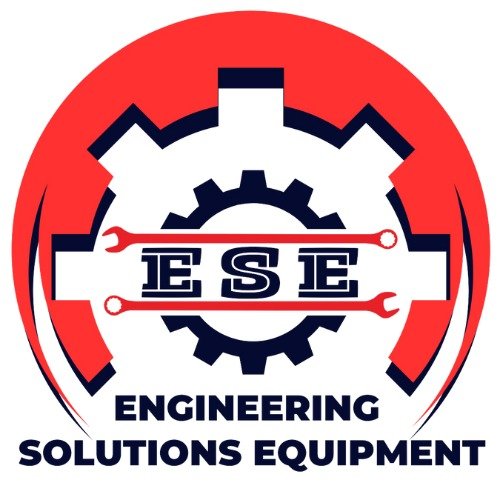

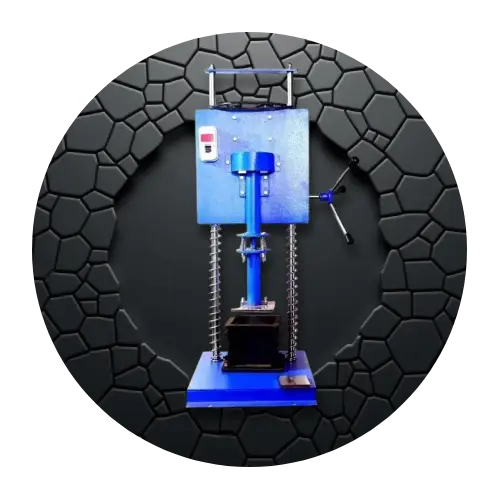
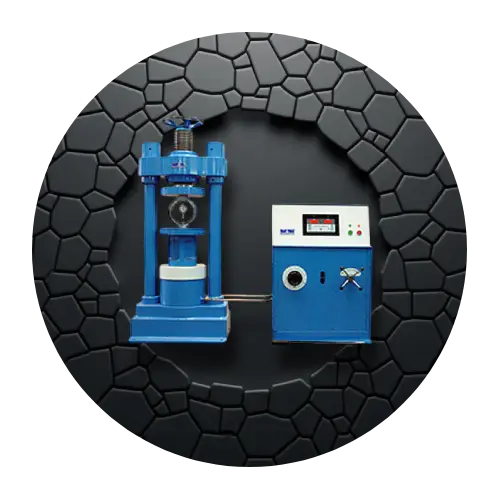
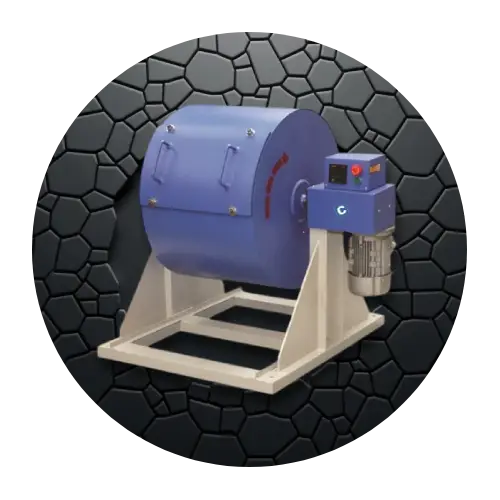
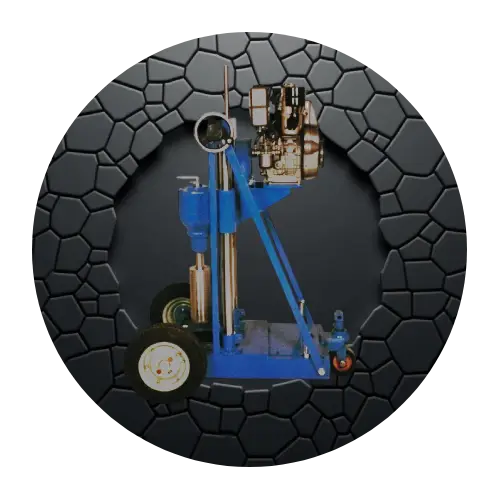
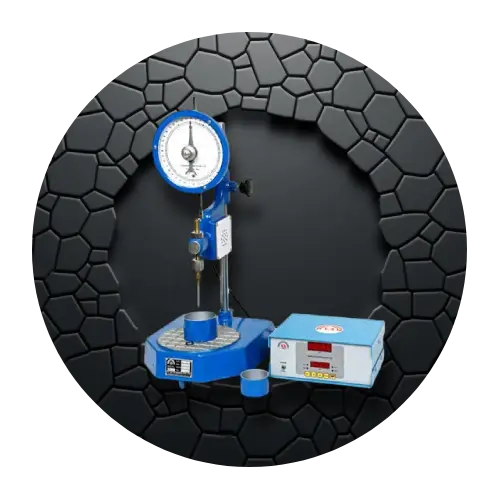



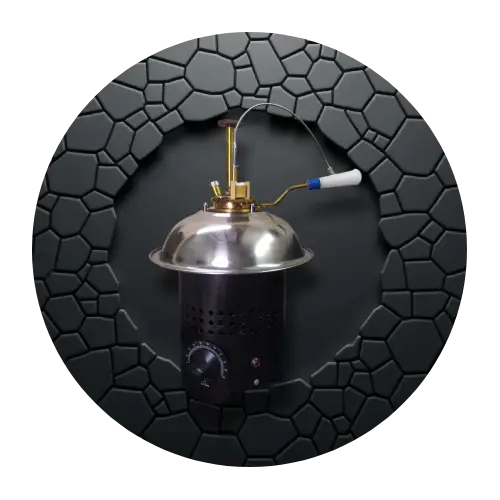

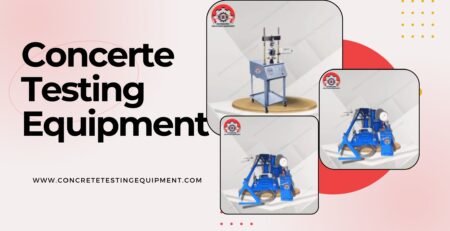








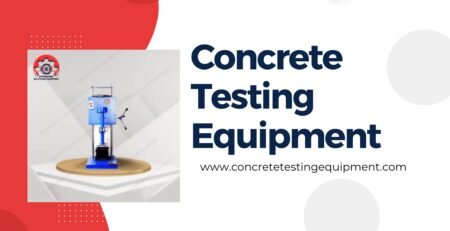


Leave a Reply